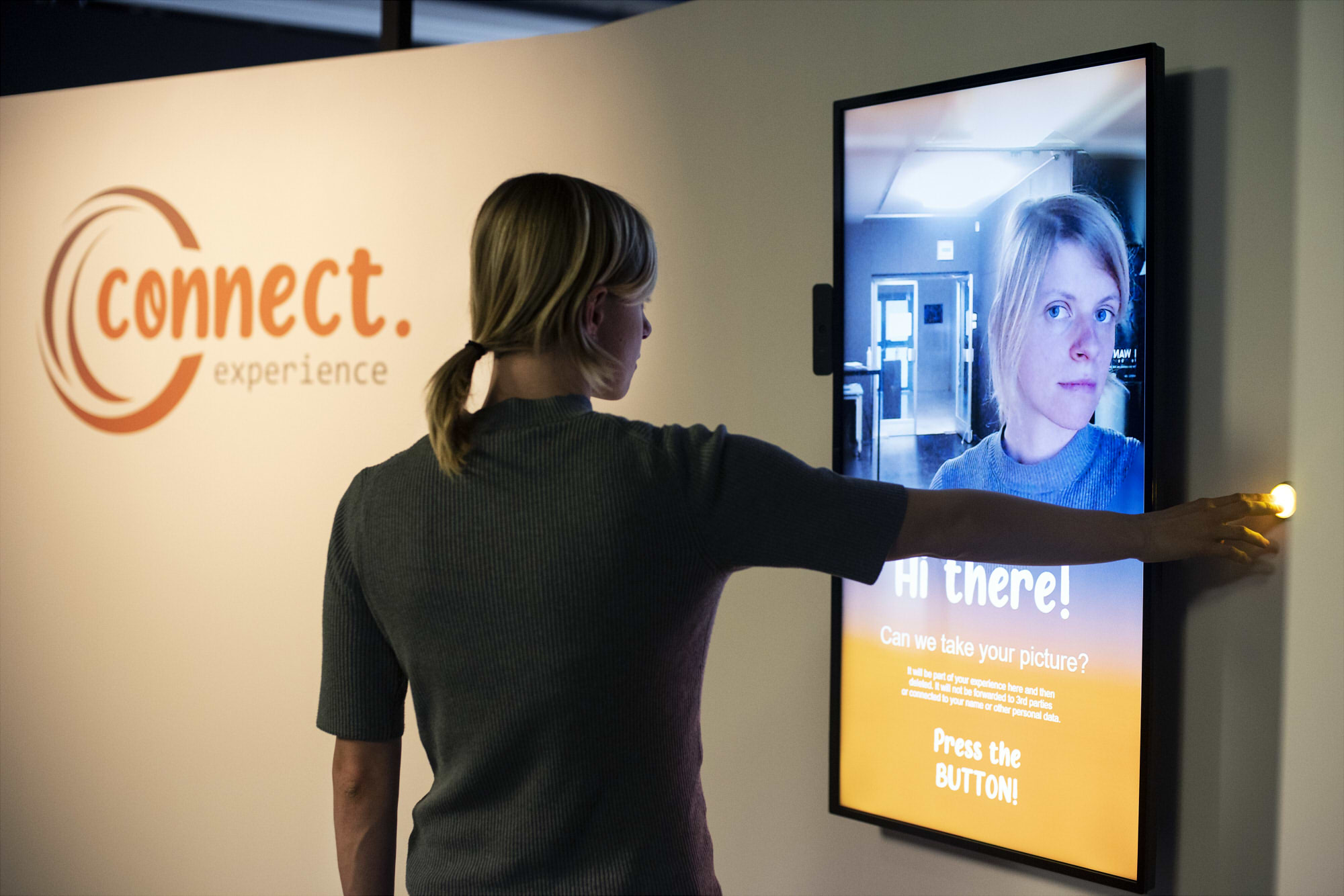Research project on mechanisms of anthropomorphisation in the field of artificial intelligence and the return impact of AI on its users.
connect.experience
WebsiteDuring her residency at osmo/za, artist Rosi Grillmair researched mechanisms of anthropomorphisation in the field of artificial intelligence and the return impact of AI on us, its users and (co)creators, who, in the now habituated interactions with such technologies, are also constantly updating and nearing machines in our behaviours.
The artistic project connect.experience reverse engineers the procedures and situations in which we’re training algorithms daily – by confirming we are not robots, evaluating translations, recognising traffic lights and road crossings, talking to virtual assistants and chatbots … The artist has translated them into intentionally awkward and dysfunctional tasks for observing the feedback effect of such interactions on us.
The exhibition, as a transformative ideological apparatus, is used as a polygon to carry out an experiment: training a multitude of people through repetition, learning and voluntary optimisation. Using the promotional address of contemporary applications and services, it promises involvement, transgressive experience, personal growth, networking and collaboration. It politely invites us from the streets and behind our screens, into a seemingly playful situation, which in turn requires a careful reading of signs and execution of instructions. Namely, because the artist designed the exhibition as one would write an algorithm. Algorithms are, after all, abstract concepts that with the help of the appropriate (im)material infrastructure are either executable or not.
While following the circular path of a closed program loop – solving tasks, observing, responding, weaving semantic networks and learning – we’re physically executing the exhibition algorithm. Much like the first calculations in the beginnings of computer history were performed by “human computers”. The object of this behavioural programming is therefore us. The installation works as a program that, in seven steps, takes the visitor on a path of personal optimisation – becoming an artificial intelligence. When we’ve returned to the starting point at the end of our journey, we may, transformed by the experience, find it easier to integrate into contemporary techno-capitalism, or we may simply be better adapted to viewing exhibitions.
